- Home
- William C. Dietz
Graveyard Page 2
Graveyard Read online
Page 2
“The perp cut a six-foot-long hole in the bed of the truck,” Lee said. “And it had to be left or right of the drive shaft.”
“And that means he or she’s done this before,” Yanty commented. “Or plans to do it again.”
“Precisely,” Lee said. “Mike, can you zoom in? If so, I’d like to take a look at the license plates coming and going.”
It turned out that Mike could zoom in, and he proceeded to do so. The results were disappointing to say the least. There weren’t any plates. “So we have nada,” Yanty said. “Shit.” Lee was in full agreement.
Lee managed to clear the crime scene by three and made it home by four. Except that the condo didn’t feel like home after what had taken place there a few weeks earlier. But Lee was determined to ignore that . . . And Chef Kane helped her do so by serving cocktails, tossed green salads, and some crusty sole. Then it was time to sit on the deck and watch the sun go down. “We need a view like this one,” Lee said as she sipped her coffee. “What a great way to end the day.”
That led to a discussion of all the properties they’d seen over the last two weeks and how to rank them. Later, as Lee lay next to Kane, she thought about the way her life had changed. There were things to look forward to now—and a person to share them with. That was new, and for the first time in a long time, Lee was happy.
Lee had never been good at getting up in the morning and was often late for work until she moved in with Kane. Now, every morning began with a kiss on the forehead or a pat on the bottom, depending on what part of her was available.
As Kane went out for his morning run, Lee took her shower and got ready to leave. Then they had a cup of coffee together before going their separate ways. It was a ritual and one Lee looked forward to. So she was standing in the kitchen, and Kane’s coffee was ready when he returned. He was dressed in a tee shirt, blue shorts, and running shoes. “You’re right on time,” Lee observed. “A shrink with OCD . . . Someone should write a paper about that.”
“A cop who breaks all the rules,” Kane countered. “Someone should write a paper about that. And maybe I will.” They laughed.
Kane took a sip of coffee and gestured to the small flat-screen TV that sat on the counter top. “So what’s in the news this morning?”
“It sounds like peace could break out at any moment,” Lee replied. “The Aztec ambassador is going to meet with a representative from the Republic of Texas later today. And our Secretary of State will be there, too.”
• • •
After the plague had struck, hundreds of thousands of people were declared communicable, some mistakenly, and herded into hastily organized “recovery” camps. Eventually, the recovery camps became “relocation” camps as untold thousands were loaded onto trucks and sent east. The sudden influx of mutants caused the “norms” in bordering states to flee west—and those who were B. nosilla negative were allowed to stay.
Other parts of what had been the United States went through a similar process, resulting in so-called red zones, where mutants lived, and the green zones, which belonged to the norms. It wasn’t long before zones and collections of zones gave birth to nation-states like Pacifica, which consisted of Washington, Oregon, and California, and the Republic of Texas, which incorporated Idaho, Utah and Arizona.
Meanwhile, south of the border, a new Aztec Empire had been born. In many ways it was a long-delayed reaction to the Treaty of Guadalupe Hidalgo, which brought the U.S.-Mexican War to an end on February 2, 1848. Having won on the battlefield, the United States could dictate the terms of a settlement that allowed it to acquire more than five hundred thousand square miles of valuable territory, including what became the states of California, New Mexico, Arizona, Nevada, Utah, and parts of Wyoming and Colorado for the paltry sum of $15 million. A settlement that still rankled more than 220 years later.
And that was why the newly formed Aztec army had crossed the border halfway between San Luis and Nogales a few months earlier and had been slugging it out with the Republicans ever since. And there was the very real possibility that Pacifica would be dragged into the conflict since the Aztecs were determined to take California back. “I’m glad to hear that everybody’s at the table,” Kane said. “Maybe they can work something out. How about you? Will this be a normal day?”
“I hope so,” Lee replied. “I’ll call or text you if things go off the rails.” Lee gave him a coffee-flavored kiss followed by a wave as she headed for the door.
Lee knew that there were a number of people who would like to kill her, including the Bonebreaker. So she was careful to scan her surroundings as she left the condo, entered the elevator, and rode it down to the parking garage. The car appeared to be undisturbed, but appearances could be deceptive. Lee removed a handheld GPS and cell-phone detector from her bag, turned it on, and circled the vehicle. If a tracker had been placed on the sedan during the night, the device would warn her. None had.
Lee got in, started the engine, and drove to a restaurant called Maria’s, where she ate a breakfast burrito before completing the trip to work. The LAPD’s headquarters building was known for its angular appearance—and cost $437 million old bucks to construct back in 2009. Unfortunately, the façade had been damaged by a rocket attack in 2065 and was still awaiting repairs.
Lee entered the ramp that led to the parking garage, paused to show her ID, and continued down until she located an empty slot. Then she rode an elevator up to the sixth floor, which was home to the Chief of Detectives, her staff, and about sixty detectives. All of whom occupied the maze of cubicles generally referred to as the bull pen.
Of the larger force, only twelve men and women were members of the elite Special Investigative Section (S.I.S.) charged with getting the city’s most dangerous criminals off the street. That was the unit Lee belonged to—and she made it to roll call with a minute to spare. The conference room was about half-full, which was typical, since five or six detectives were out of the office at any given time. But both Yanty and Prospo looked glum. Probably because they knew something that she didn’t.
Lee plopped down next to Prospo and was about to interrogate him when Jenkins entered the room. He had black hair, startling green eyes, and brown skin. He was dressed in a nicely cut gray suit. “I wish I could say ‘good morning,’” Jenkins said soberly, “but I can’t. All of you have met Cheyenne Darling—and are cognizant of the relationship she had with Deputy Chief McGinty.”
Like Lee’s father two years earlier, Deputy Chief of Detectives Ross McGinty had been murdered by the Bonebreaker and his body dumped next to the Hollywood Freeway. Most of him anyway . . . The Bonebreaker liked to keep his victims’ extremities.
Furthermore, Lee knew that although McGinty and Darling had been lovers, they didn’t live together because he feared for her safety. And McGinty, like her father, had been subject to bad dreams and bouts of depression.
“Darling was visiting friends yesterday,” Jenkins continued. “And when she came home, a package was waiting for her. It appeared to be from her sister, so she opened it. And there, nestled in shredded packing paper, was Chief McGinty’s left femur.”
Lee heard expressions of disgust and anger from all around her as she remembered what had been sent to her. It was meant to hurt and had. Fortunately, with Kane’s help, she’d been able to recover. So she knew what Darling was going through. “We need to find this asshole,” Jenkins said grimly. “How ’bout it, Lee? Have you got anything new?”
“The Bonebreaker was active during the Vasquez investigation,” Lee replied. “We know that because he was posing as Detective Lou Harmon. And we’re pretty sure that he was wearing a latex mask that covered his entire head.”
Harmon had been murdered by the serial killer years earlier, and by posing as the dead detective, the Bonebreaker was demonstrating his superiority over everyone in the LAPD. All of those in the room knew it. What they didn’t know was tha
t in order to prevent more murders by another killer, Lee had been forced to interact with the Bonebreaker. It was a decision that could get her fired.
“So,” Lee continued, “we’re in the process of contacting all of the companies that manufacture, distribute, and sell full-head masks to see if we can identify him that way. Odds are that the Bonebreaker has an extensive collection of masks, so who knows? Maybe we’ll get lucky.”
“Let’s hope so,” Jenkins said. “Meanwhile, the forensics people are going to run every test they can think of on the femur.”
“How is Ms. Darling doing?” Lee inquired.
Jenkins made a face. “Not well. What about the face case? How’s that going?”
Lee and Yanty provided brief reports and were told to “Stay on it.”
Then it was time for other detectives to sit on the hot seat while Lee thought about the day ahead. She was working on another Bonebreaker lead as well. One she couldn’t tell anyone about, because if she did, they’d find out that she’d been in communication with the very person she was supposed to bring in.
Finally, after the usual reminder to catch up on their paperwork, the detectives were released. Lee went back to her desk, where she worked her way through thirty-nine e-mails before slipping out of the office.
It took less than fifteen minutes to drive to Chinatown and the walkup apartment that Ebert Keyes called home. The relationship went back to the point when Lee had arrested Keyes for hacking into the state’s social support system—and reclassifying himself as fully disabled. A change that increased the size of his monthly payment by three hundred nubucks.
He’d been released after serving six months of a two-year sentence, and now he was out on parole and working as a freelance “troubleshooter.” Was he hacking on the side in order to supplement his income? Probably. But Lee hoped not.
Lee took advantage of being a cop by parking the creeper in a truck zone. Then she called in: “This is 1-William-3. I’m Code 6. Over.” If someone, Jenkins for example, wanted to check on her movements he’d be able to see where Lee had been. But he had no reason to track her movements. Not at the moment anyway.
The response was a predictable, “Roger that, 1-William-3.”
If the area hadn’t been especially prosperous before the plague killed off half the population, it was even more depressed now. At least half of the stores Lee passed had faded FOR RENT signs hanging in their windows.
But according to the neon sign out front, the Sue Yong nail salon was open for business and appeared to be thriving. Lee stopped in front of the nondescript door next to the salon and pressed the intercom button. There was a soft whirring sound as the camera mounted over the door zoomed in on her. Then she heard a click as a lock was released.
Lee pushed the door open and was careful to close it behind her. After that she had to climb a narrow flight of worn stairs in order to reach the second floor. Lee knew there was a freight elevator at the back of the building, but Keyes took pleasure in forcing able-bodied people to exert themselves.
Once on the second floor Lee was confronted by a steel fire door complete with a waist-high gun port. To say that Keyes was cautious would be an understatement. But that was understandable given where he lived—and the type of people he dealt with. Lee pushed another button, was rewarded with a click, and pushed her way into the chaos that was Keyes’s apartment.
A winding passageway led through piles of electronic equipment. Some of the computers were intact and some had been gutted for parts. Eventually, she emerged into the open area where Keyes spent most of his time. He had an unruly head of hair and was seated with his back to her. Sunlight struggled to penetrate the filthy windows.
Though classified as a norm, Keyes had been born without legs. But in postplague Pacifica, people assumed that anyone who looked different was a mutant and therefore dangerous. That, plus an innate shyness, meant that Keyes lived alone. He was working at a parts-strewn workbench that ran the width of the front wall. “Have a seat,” he said without looking around. “I’ll be with you in a second.”
Lee looked for a place to sit down. There was no option other than a toilet with grab bars on both sides. The rest of the furnishings consisted of an unmade hospital bed, the sliding power lift Keyes could use to hoist himself in and out of the chair, and haphazardly mounted flat-panel TV screens. There wasn’t any kitchen, which explained why so many empty take-out containers were stacked on a table. Lee watched a cockroach emerge from a flat pizza package and make the four-inch trip to a box labeled, SHANDONG TO GO.
Keyes turned at that point and realized that she was still standing. He had a full beard to match the hair. “Sorry . . . I don’t get a lot of visitors. . . You’ll find a chair over there.”
Keyes pointed, and Lee saw he was correct. A cardboard box full of junk sat atop an old straight-backed chair. She went over to retrieve it. “There,” Keyes said, as she sat down. “That’s better. So how’s the law-enforcement racket?” The wheelchair made a whirring sound as it swiveled her way.
“It’s never been better,” Lee replied. “People are lining up to get arrested.”
“But no Bonebreaker?”
“No. Not yet.”
Keyes had a tendency to tug on his beard when he was thinking. “I’m sorry to hear that . . . Especially since I don’t have any good news for you. I ran a reverse trace on the e-mail address you gave me but ENOB8 led to a dead end. It looks as though the Bonebreaker is making use of an onion router that directs traffic through a network of volunteer-run relays. Thousands of them. And that makes his e-mails impossible to trace. I’m sorry.”
Lee’s spirits fell. She’d been hoping that Keyes would pull a miracle out of his technological hat. “So that’s it? There’s nothing we can do?”
“No,” Keyes answered. “Maybe the government could identify his real IP address. But I don’t have the necessary resources—and for some reason, you can’t bring them in on this.”
It was a very perceptive comment, and Lee knew that her lack of an adequate response would confirm his suspicions. “Okay,” she said. “What do I owe you?”
“Nothing,” Keyes replied. “I’d still be sitting in the slammer if you hadn’t gone in front of the parole board. So I owe you.”
“That’s bullshit,” Lee replied. “But it’s nice bullshit. Thanks for trying. Speaking of your parole, how’s it going?”
Keyes grinned. “Are you kidding? Take a look around. It’s perfect.” Both of them laughed. After two or three minutes of small talk, Lee promised to stay in touch and left.
Having struck out on the Bonebreaker lead, it was time for Lee to turn her attention to the so-called face case. There were thousands of box trucks roaming the streets of LA. So Yanty had chosen to focus his attention on the handful of surgeons who specialized in face transplants. Was one of them moonlighting? Were the doctors aware of any suspicious activity? And was anyone performing legit operations on mutants?
In an effort to develop leads, Lee, Yanty, and Prospo were going to interview all of the face-transplant specialists in LA. The first doctor on Lee’s list was on the staff at the UCLA Medical Center in central LA, and Dr. Mary Kottery had agreed to see Lee during her lunch hour.
With that in mind, Lee wanted to be on time, so she pushed hard to make her way through the midday traffic. It had been worse back before the plague, or that’s what the old-timers claimed, but Lee found that difficult to believe.
With only ten minutes to spare, Lee pulled into one of several parking lots associated with the medical center. Like so many of the city’s structures the boxy buildings looked old and worn. Still, everyone agreed that the hospital was one of the best Pacifica had to offer. After hiking in from the parking lot, Lee had to pass through multiple layers of security before gaining access to the main building. And since Lee was carrying two pistols, she had to show her ID to five differ
ent people before being cleared through.
Then began the equally demanding task of going up to the third floor and navigating her way through a maze of hallways to reach Dr. Kottery’s office. A receptionist invited her to sit down, and Lee had to wait for fifteen minutes before the surgeon arrived.
Kottery was a tall, thin woman, with wispy bangs and the precise movements of a bird. She wore baggy scrubs and was quick to apologize. “I’m sorry to keep you waiting, Detective Lee . . . This morning’s surgery took longer than I thought it would. Please . . . Let’s go into my office. Do you mind if I eat my lunch while we talk?”
Lee assured Kottery that she didn’t and sat across the desk from the other woman as she tackled a complicated salad she’d brought from home. Another person might have found it difficult to scan the postmortem photos and eat at the same time but not Kottery. “That looks like a transplant, all right,” the doctor said as she examined one of the pictures on Lee’s tablet. “One that went horribly wrong.”
“So do you know anyone who might do something like that?” Lee inquired. “Have you heard of illicit face transplants?”
“The simple answer is no,” Kottery replied. “But you said that he was B. nosilla positive, correct?”
“Yes.”
“Well, our ability to communicate with doctors in the red zone is somewhat limited,” Kottery said. “But we know that facial disfigurements are common over there. So if one of our surgeons had some success, word of that would spread, and there would be a lot of pent-up demand.”
Lee frowned. “So he or she might be performing such operations on a regular basis?”
“It’s possible,” Kottery allowed. “But remember . . . A transplant is a very complicated process. That means that the person you’re looking for would have a lot of accomplices, including doctors, nurses, and technicians. And they would require all sorts of supplies, not to mention HLA typing, which is used to match the donor with the recipient. Otherwise, there’s a possibility that the recipient’s body might reject the transplanted tissue.

 Halo: The Flood
Halo: The Flood Red Thunder (Winds of War Book 4)
Red Thunder (Winds of War Book 4) Red Tide
Red Tide Graveyard
Graveyard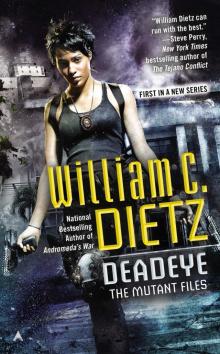 Deadeye
Deadeye Resistance: The Gathering Storm r-1
Resistance: The Gathering Storm r-1 Legion Of The Damned - 02 - The Final Battle
Legion Of The Damned - 02 - The Final Battle Galactic Bounty
Galactic Bounty When All Seems Lost
When All Seems Lost Red Flood (Winds of War Book 2)
Red Flood (Winds of War Book 2) By Blood Alone
By Blood Alone Andromeda's War (Legion of the Damned Book 3)
Andromeda's War (Legion of the Damned Book 3) Hitman: Enemy Within
Hitman: Enemy Within Bodyguard
Bodyguard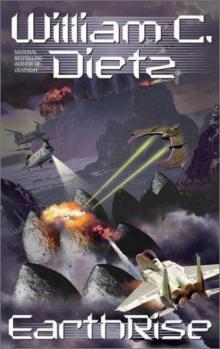 EarthRise
EarthRise Drifter's War
Drifter's War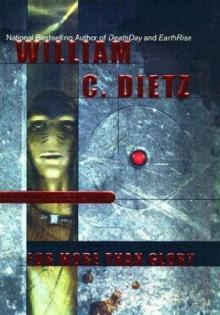 For More Than Glory
For More Than Glory When Duty Calls
When Duty Calls Into the Guns
Into the Guns Drifter
Drifter Ejecta
Ejecta When All Seems Los lotd-7
When All Seems Los lotd-7 Alien Bounty
Alien Bounty When Duty Calls lotd-8
When Duty Calls lotd-8 Steelheart
Steelheart Matrix Man
Matrix Man Legion of the Damned
Legion of the Damned Snake Eye
Snake Eye Logos Run
Logos Run Bones of Empire
Bones of Empire McCade's Bounty
McCade's Bounty Mars Prime
Mars Prime Where the Ships Die
Where the Ships Die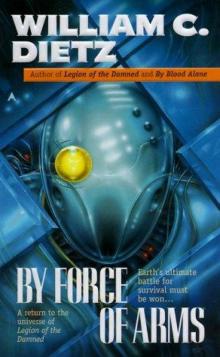 By force of arms lotd-4
By force of arms lotd-4 Imperial Bounty
Imperial Bounty Legion Of The Damned - 01 - Legion of the Damned
Legion Of The Damned - 01 - Legion of the Damned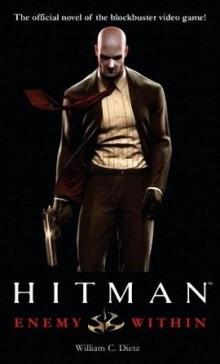 Hitman: Enemy Within h-1
Hitman: Enemy Within h-1 Drifter's Run
Drifter's Run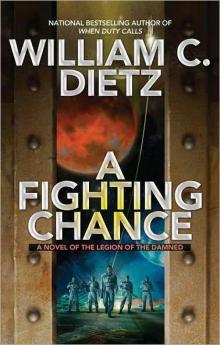 A Fighting Chance
A Fighting Chance McCade on the Run (Sam McCade Omnibus)
McCade on the Run (Sam McCade Omnibus) Legion Of The Damned - 06 - For Those Who Fell
Legion Of The Damned - 06 - For Those Who Fell Halo. Flood
Halo. Flood Seek and Destroy
Seek and Destroy Heaven's Devils si-1
Heaven's Devils si-1 Runner
Runner By Force of Arms
By Force of Arms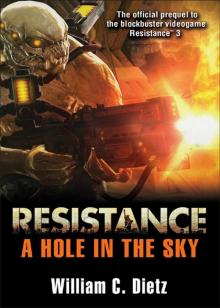 A Hole in the Sky
A Hole in the Sky The Seeds of Man
The Seeds of Man Andromeda's Fall
Andromeda's Fall Andromeda’s Choice
Andromeda’s Choice Prison Planet
Prison Planet Heaven’s Devils
Heaven’s Devils Redzone
Redzone Jedi Knight
Jedi Knight